Reference to our How-To article
If you want to get much further into the subject matter and even plan a conversion yourself, here you should refer to our great how-to-guide: Optimize graphics card cooling and thermal paste, which also provides a detailed checklist for contains all the steps to be done and which we use in part here.
Why so pamphlets? We're getting really clean.
The industry uses various methods to provide a graphics card with thermal paste. Often this is already applied by the cooler OEM to the heat sink (screen or pad printing or soft pads from a transfer film) or it is used at the moment of the wedding – i.e. placing the cooler on the board – correspondingly portioned liquid paste. Almost always, however, it is too much of a good thing and in the illustrated case even a true schmandkuchen!
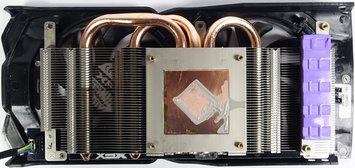 |
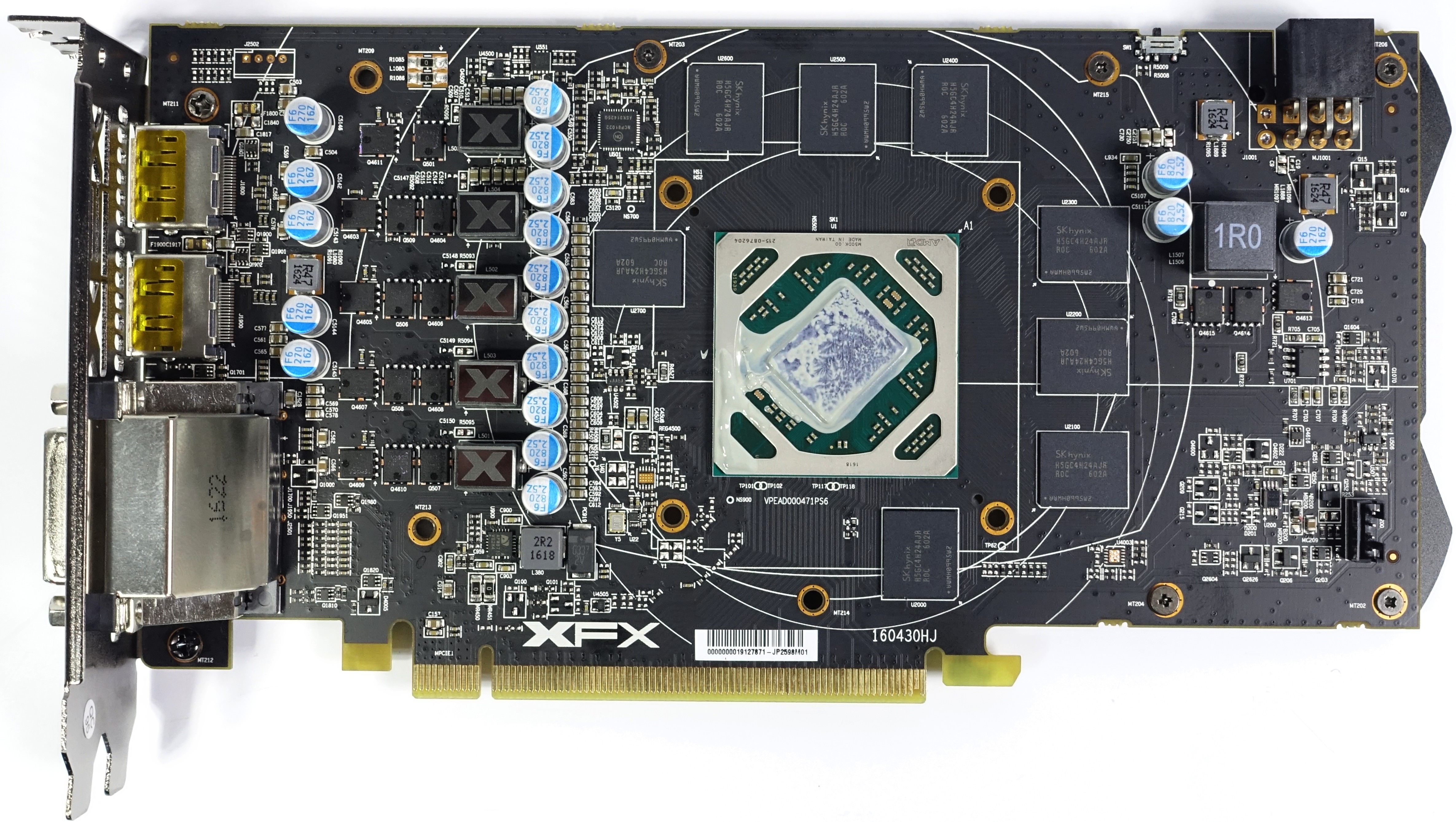 |
As we can see, this paste has been used so abundantly that half the base has been filled with it. There is no question that this is nonsense, but it is not dangerous. These very simple silicone pastes are generally non-conductive and therefore the possibility of short circuits is not given.
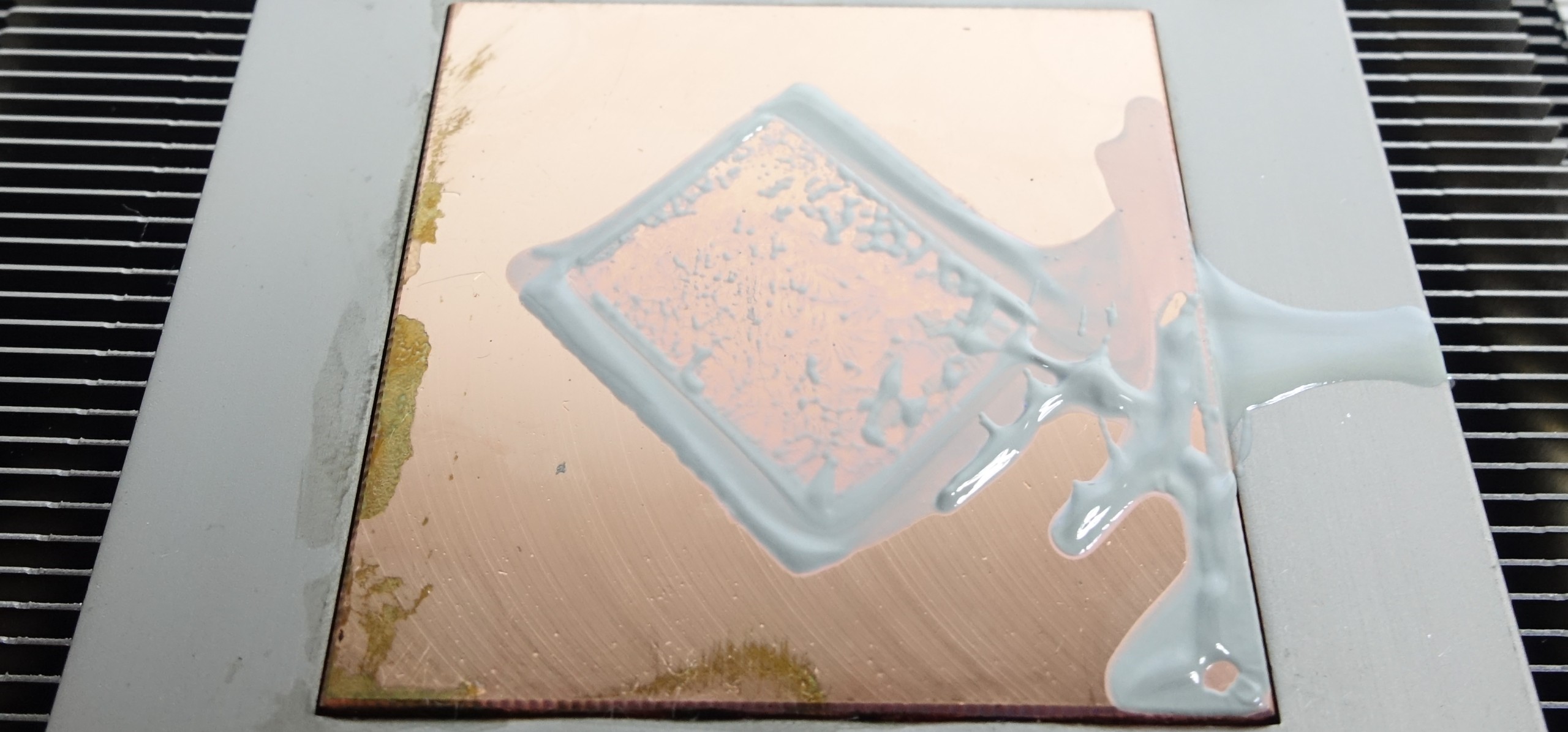 |
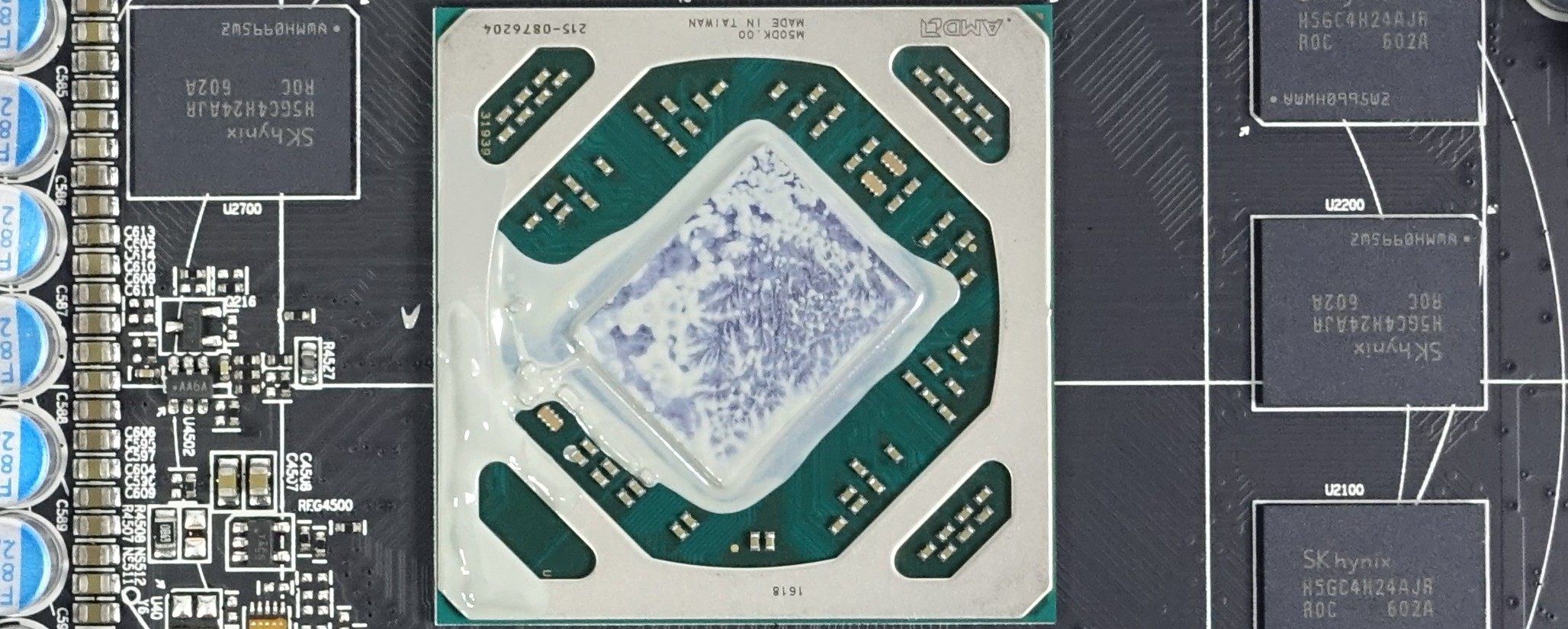 |
In spite of everything, a very thorough large-scale cleaning is recommended, in which all this is wiped off with a soft cloth in the first operation, which can be removed without any further aids. With the heat sink you have to take extra care that leftovers of the old paste can remain here in various grooves, which also applies to ground heatpipes.
This definitely needs to be completely cleaned, as mixing different pastes can be extremely counterproductive. Various cleaning kits from specialist retailers or, in case of doubt, even the significantly cheaper isopropyl alcohol (2-propanol), which is available at Amazon or pharmacies for example, from around four euros per litre, help here. On the other hand, it is better to do without the contaminated, more aggressive burning spirit. Completely unsuitable are any azeto cleaner, nitro dilution and the domestic nail polish remover, which can also be based on 2-propanol, but often contains other additives.
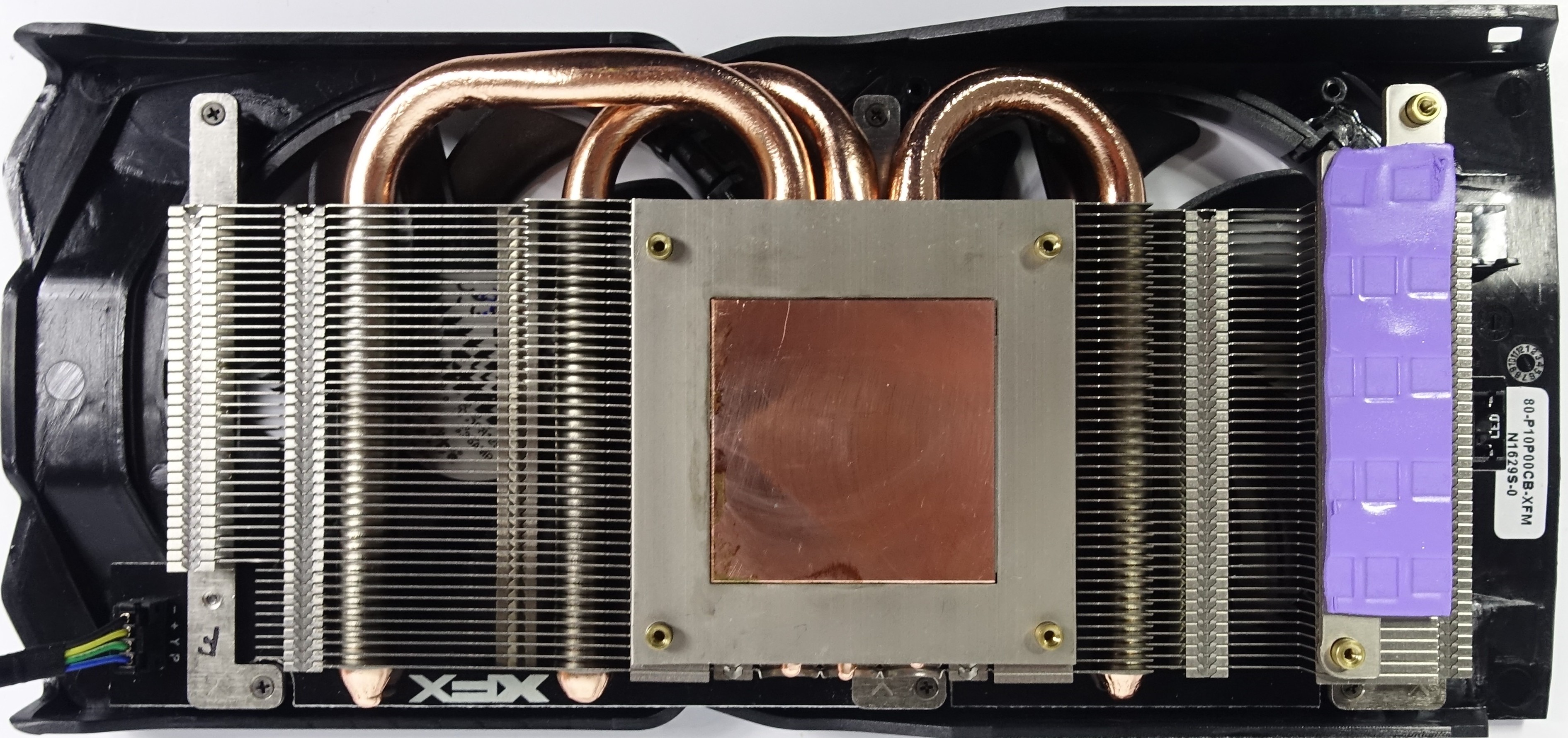
The socket also means to be pre-impregnation – especially any mechanical cleaning actions such as cockroaches or scratching must be omitted. Even the too strong rubbing with a cloth is already dangerous from a certain degree. What doesn't go away stays better and only the chip itself needs to be polished to a high gloss.
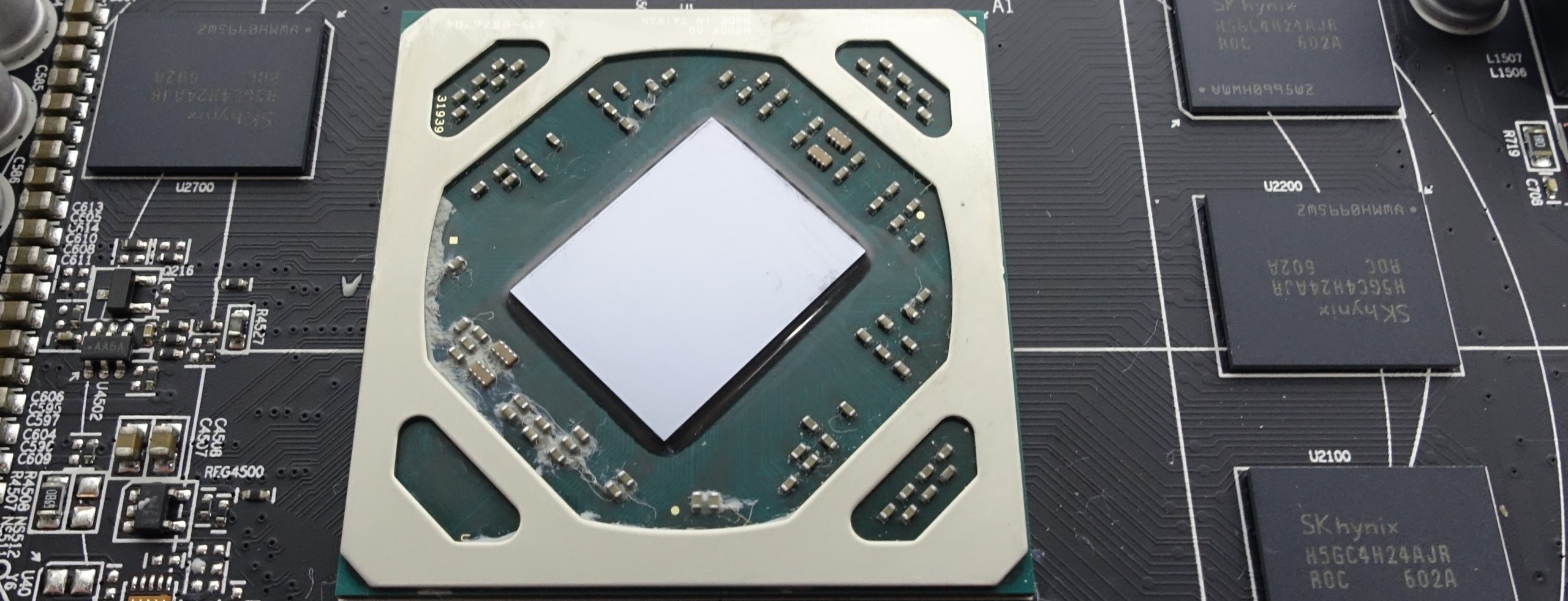
Perfect application of the right paste
So what is the right paste for a graphics card? There are tons of tests in the depths of the Internet, which usually also contradict each other clearly. Actually, each of these tests, which does not also respond to the fan speeds after the change, or the temperatures of the other components, more or less worthless.
With the exception of real water cooling without fans, the control mechanisms of current graphics cards such as AMD's Power Tune or Nvidias Boost ensure that the temperature behavior of the GPU controls the fan control, the voltage regulation and, of course, the clock significantly influenced!
The bottom line is that the clock can suddenly be held longer at the apparently same temperature, or the fans can rotate more slowly or both. In addition, a direct reduction in fan activity to a higher thermal load ensures other components, which are then cooled less at the same or even higher power dissipation! Doesn't exist? We'll show you what can really happen and what almost everyone just goes over with nonchalance.
The necessary burn-in time to achieve the best performance is also a topic that is almost never taken into account. We had all pastes "burned in" over a total operating time of 24 hours per paste, which dragged the test, but it was worth it to us. This is exactly what we would encourage every screwdriver to do in order to be able to assess the actual performance more objectively.
Since we generally prefer the blob method and the mutual screwing of the four GPU screws diagonally over cross, the selection of the most convenient paste is actually the most important task. Once again: A lens-sized blob is enough and it may also leak a little paste on the sides after the tightening. Better than to provoke blanks. If you have completed the burn-in described above, you should also check the four relevant screws again and, if necessary, Follow suit.
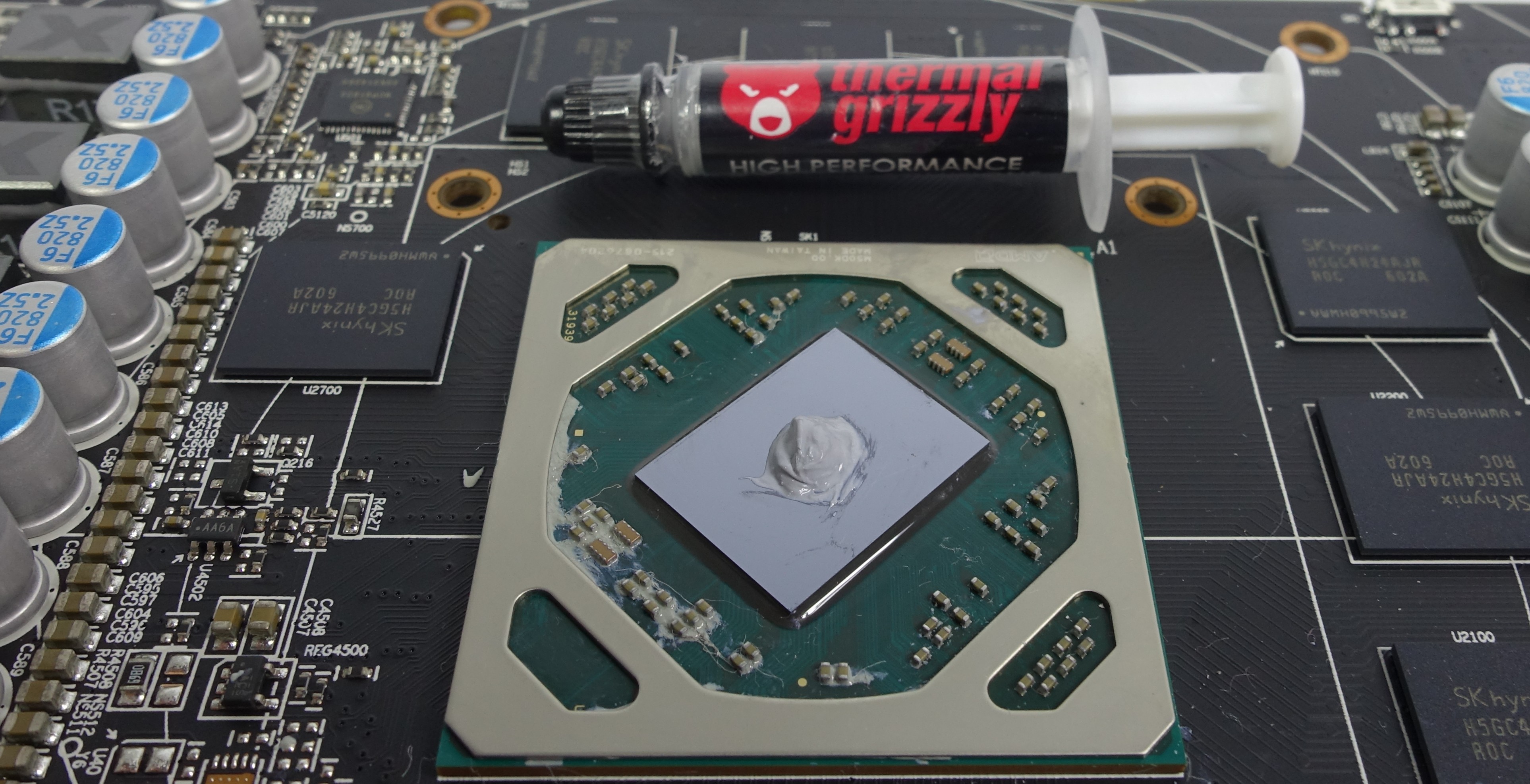
In addition to the basic properties such as the highest possible thermal conductivity (i.e. low thermal resistance), consistency plays a very important role. Tough pastes with high viscosity (e.g. Diamond pastes) are certainly a perfect melee weapon for the removal of waste heat in the hands of professionals with a lot of experience, but for the normal user they are incalculable and difficult to use. In order to be truly successful, one would then have to preheat such a paste, in sufficient quantity on the with approx. Apply 60 to 70 degrees preheated heat sink and immediately screw everything.
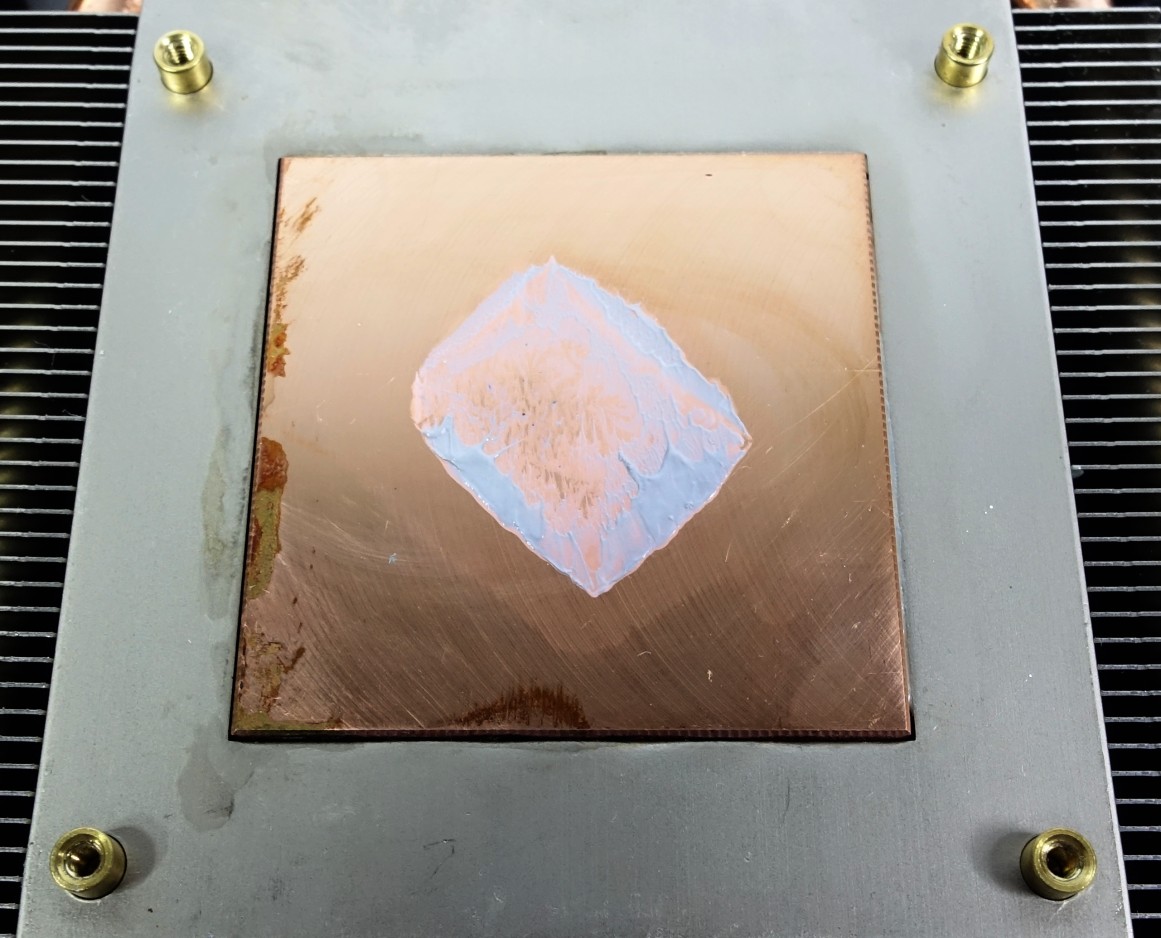 |
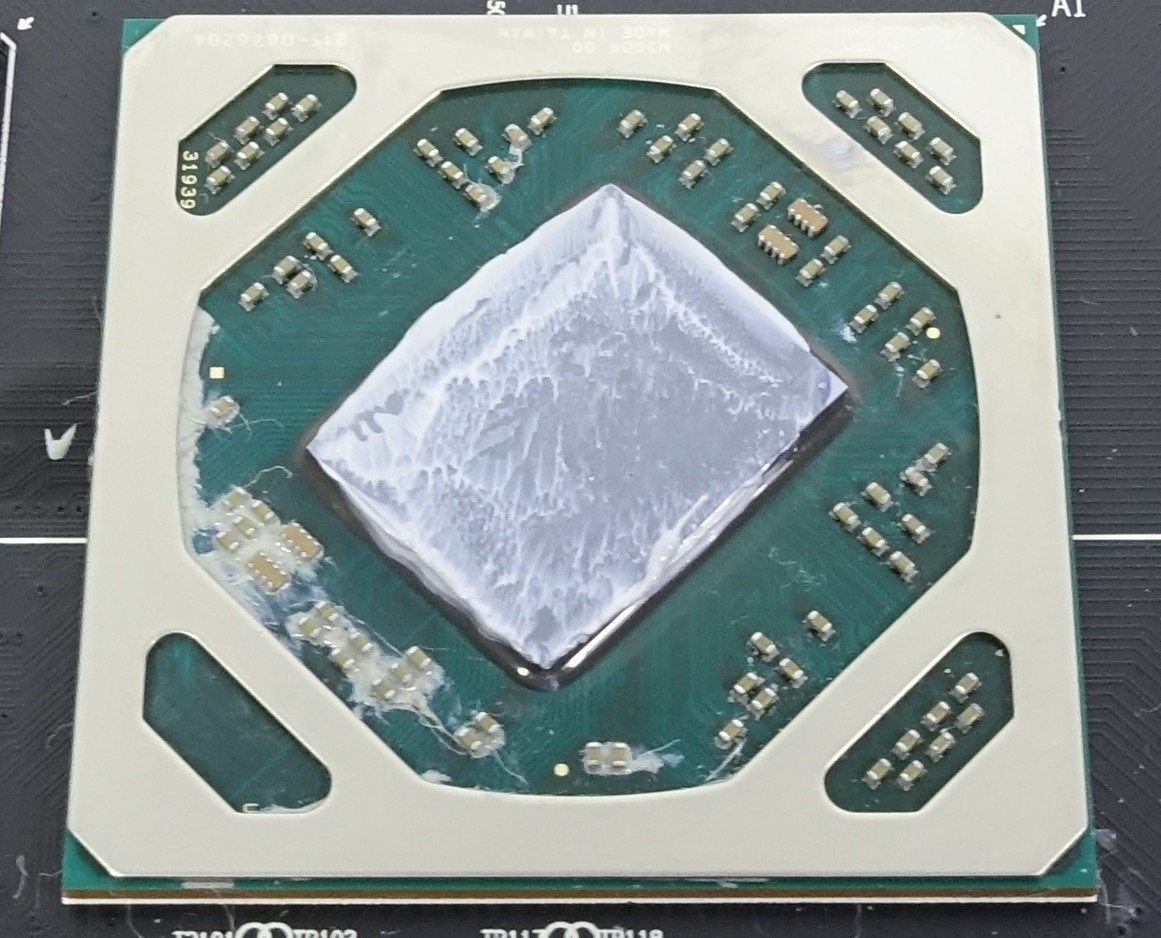 |
Let us control ourselves in between. These two pictures show that the blob shown above was absolutely sufficient and hardly anything over- or has leaked out. In addition, it shows a very thin and above all continuous WLP layer, which is all silly with spatula & Co. ad absurdum.
Let's get to the Gretchen question – the price. Not everything that is expensive and/or is advertised flowery is really suitable. The relatively small differences in the result – namely, when one evaluates under adjusted operating situs and with a check of the fan activity – many products automatically exclude due to the lack of real added value and added value. But for that we still have our charts afterwards.
- 1 - Einführung und Übersicht
- 2 - Grundlagen: Heatspreader und Heatsink
- 3 - Wärmeleitpaste: Funktion und richtiges Auftragen
- 4 - Sonderfall Grafikkarte
- 5 - Sonderfall Wärmeitpads und mögliche Verbesserungen
- 6 - Flüssigmetall und die Grenzen
- 7 - Testsetup und Messmethoden
- 8 - Testergebnisse: Wasserkühlung
- 9 - Testergebisse: Lüftkühlung (großer Turmkühler)
- 10 - Testergebisse: Lüftkühlung (Boxed-Kühler)
- 11 - Testergebisse: Grafikkarten-Kühlung (GPU)
- 12 - Testergebnisse: Viskosität
- 13 - Testergebnisse: Verarbeitung und Anwendungssicherheit
- 14 - Zusammenfassung und Fazit

































Kommentieren